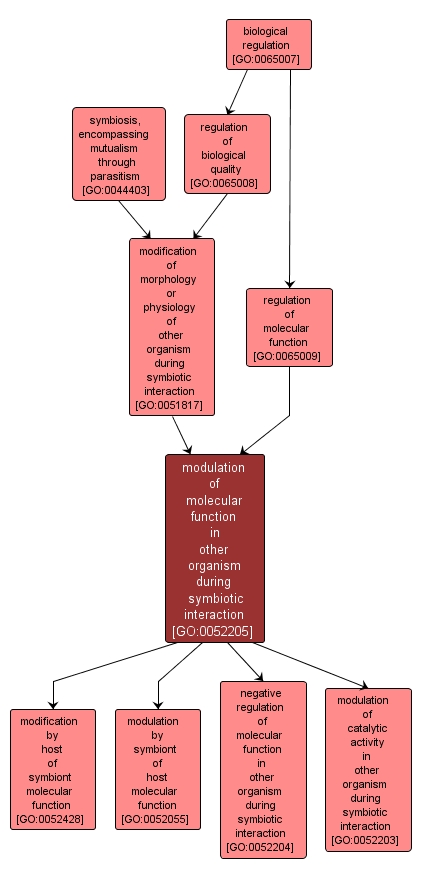GO TERM SUMMARY
|
| Name: |
modulation of molecular function in other organism during symbiotic interaction |
| Acc: |
GO:0052205 |
| Aspect: |
Biological Process |
| Desc: |
The process by which an organism effects a change in the function of proteins in a second organism, where the two organisms are in a symbiotic interaction. |
Synonyms:
- modification of protein function in other organism during symbiotic interaction
- modification of molecular function in other organism during symbiotic interaction
|
|

|
INTERACTIVE GO GRAPH
|














